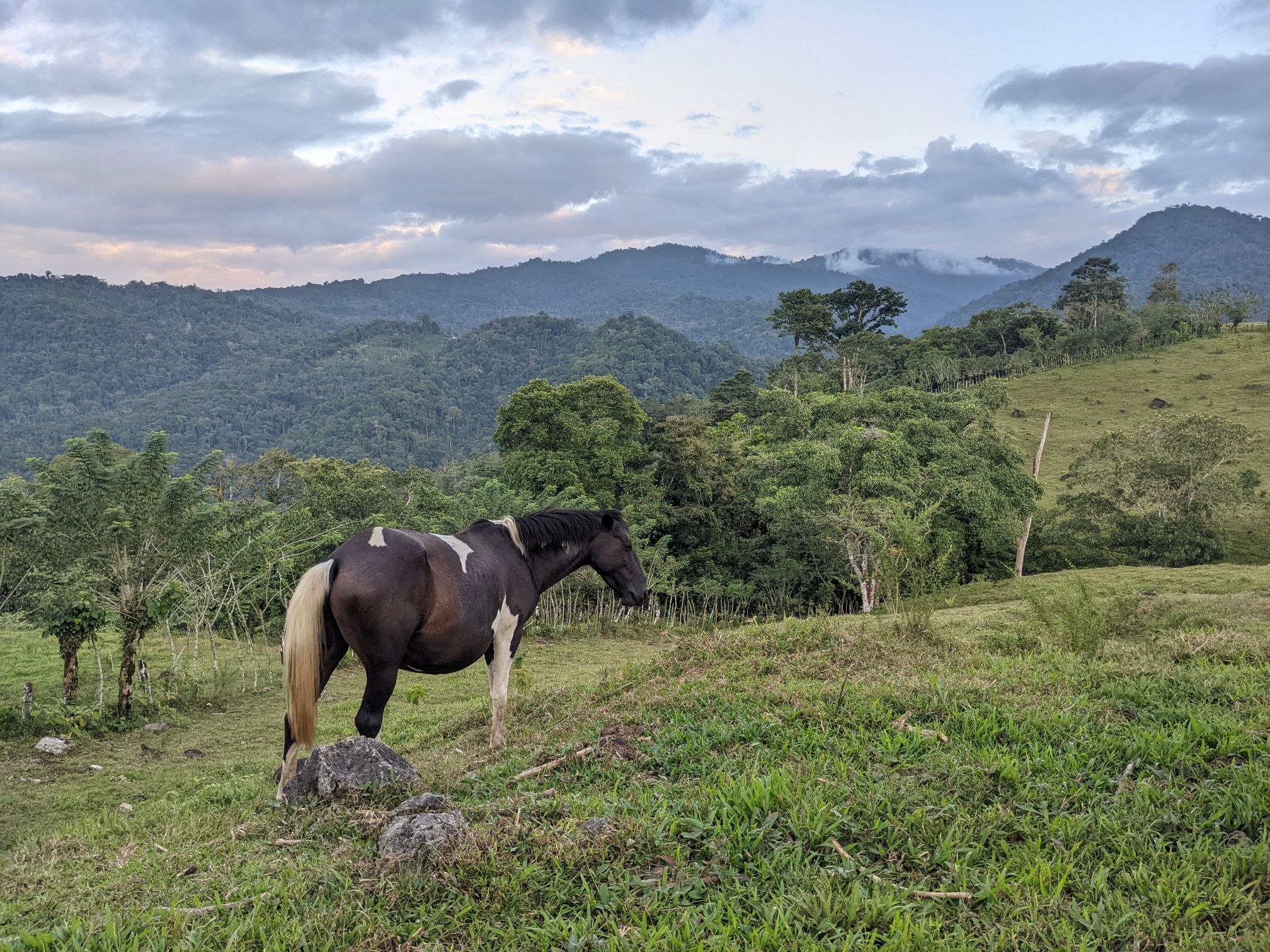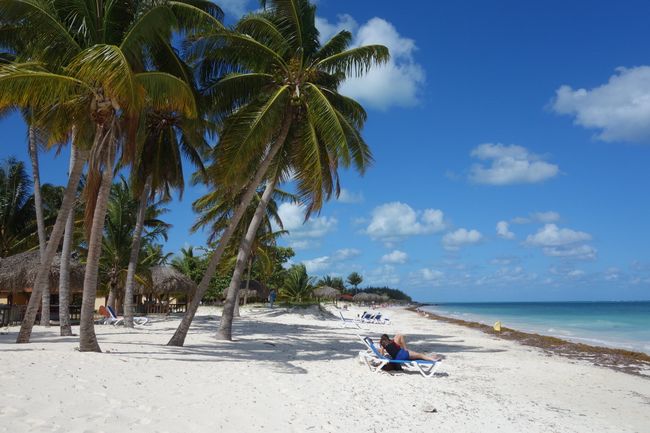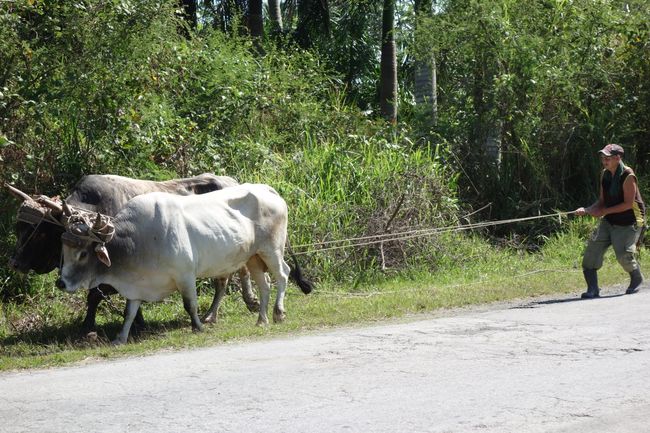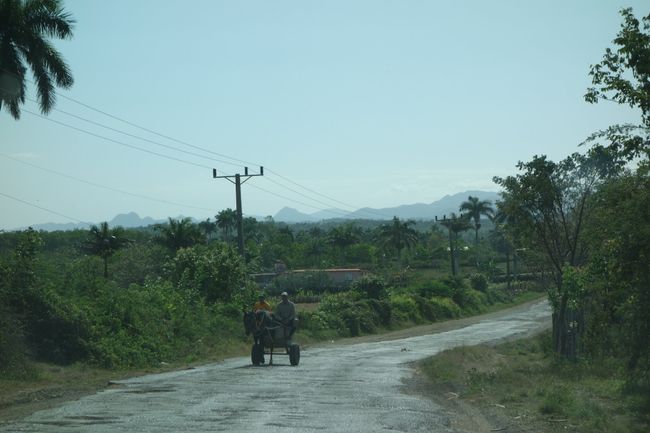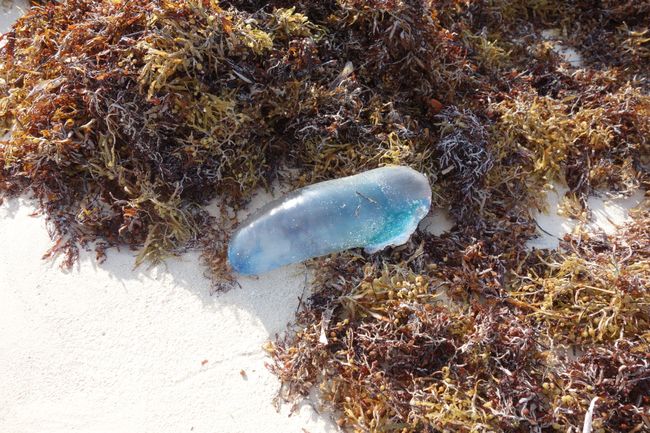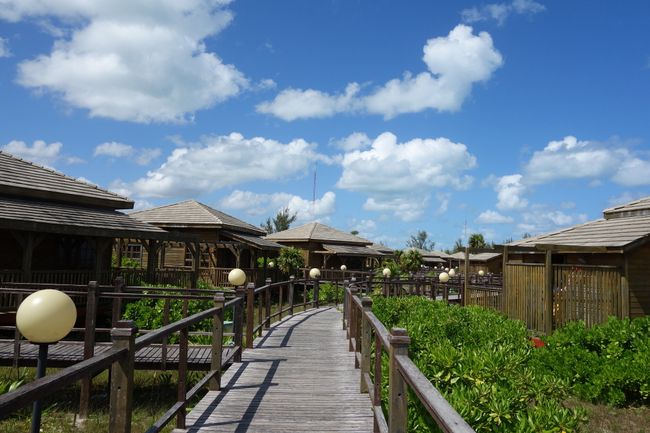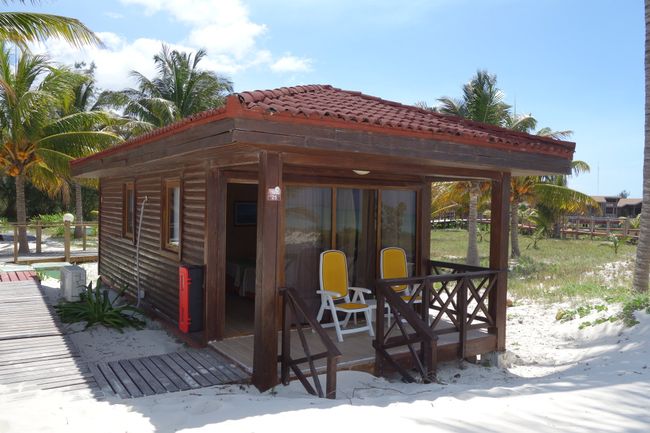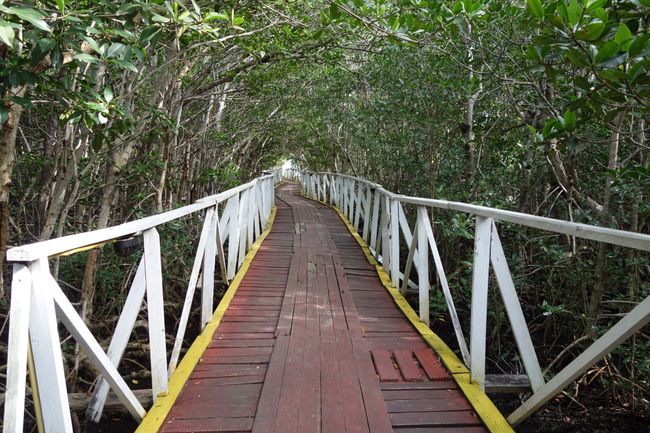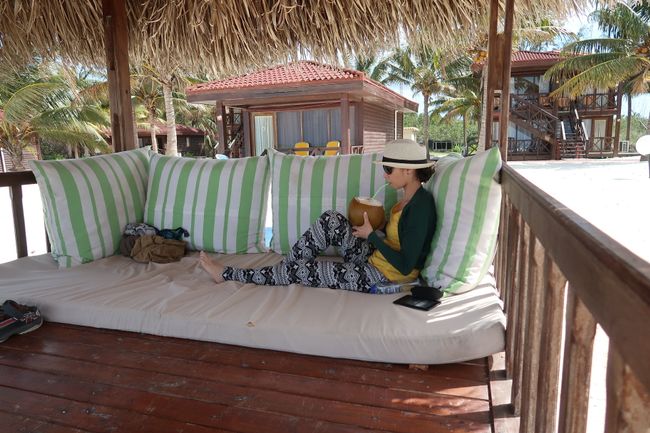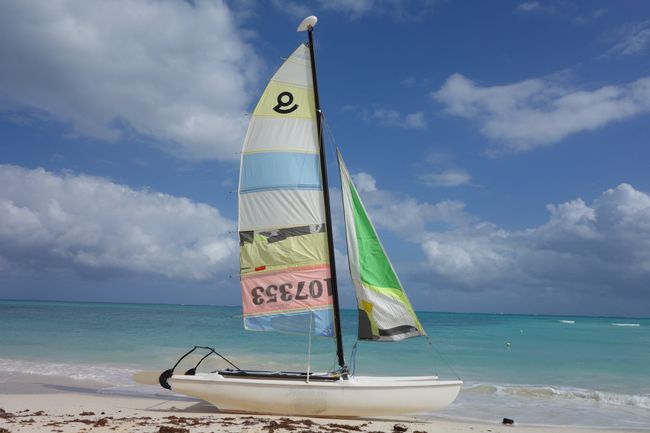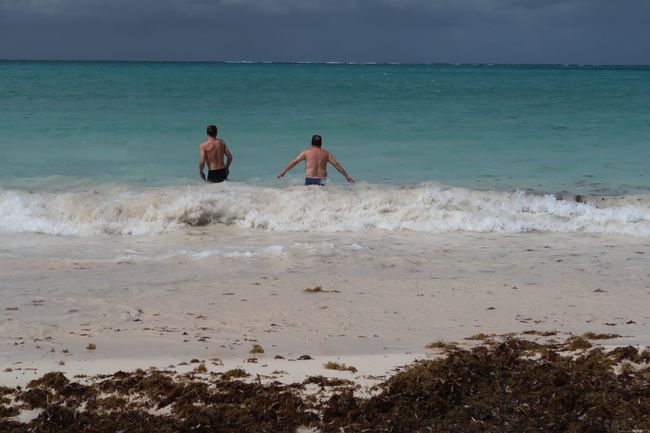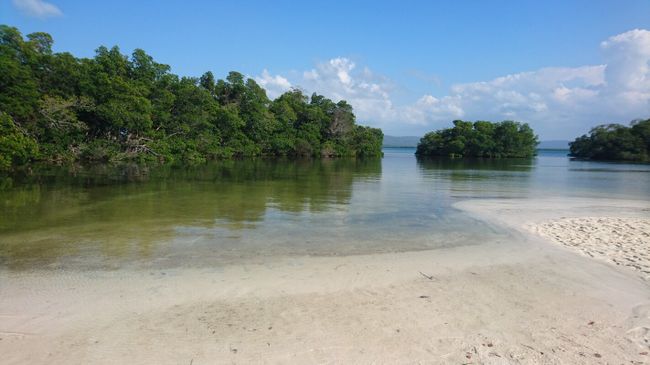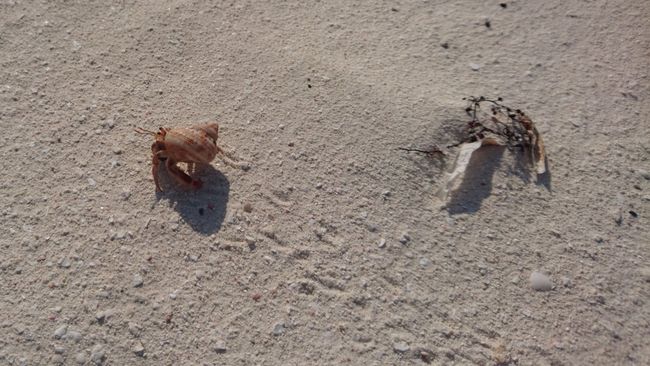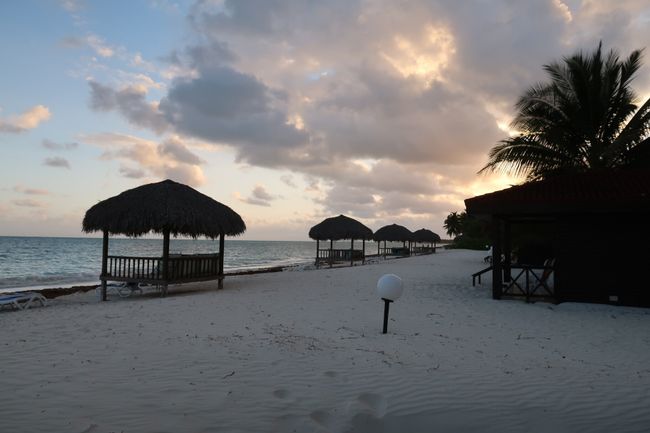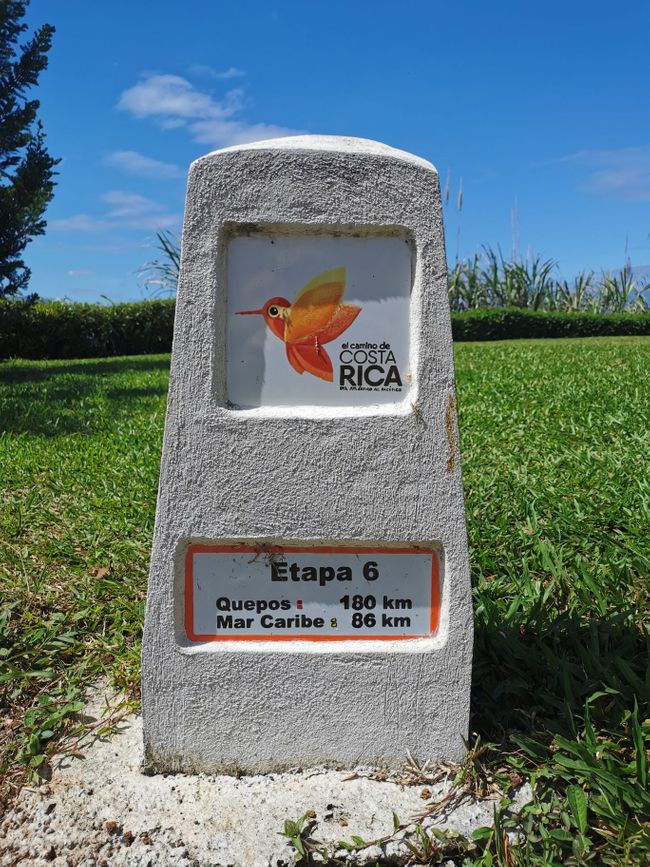
Reisefieber - Alltag ade
vakantio.de/alltagade
Cayo Levisa: Paradise beach with compromises
Oñemoherakuãva: 08.04.2019
Ejesuscribi Boletín de Noticias-pe
Today we had to get up a little earlier and there was only a quick breakfast, as we wanted to take the ferry to Cayo Levisa from the coast at 10 a.m. We had booked something classically touristy for the first and only time in a hotel resort with full board on a tiny island with a dreamy beach, where we wanted to relax, swim and snorkel for two days after the hustle and bustle in Havana.
The journey itself was quite adventurous. The road was full of potholes and we could only make slow progress, especially since the other vehicles that sometimes came towards us on our lane, but from the wrong direction, could be anything: ox carts, horse-drawn carriages, large trucks full of people on the cargo area, bicycles with several people on them, tractors and the classic vintage cars that wouldn't pass the German TÜV. However, we managed to arrive on time in the small coastal town of Palma Rubia.
But now the next hurdle came. We had heard that Cayo Levisa is actually forbidden for Cubans. However, we only found out about this after we had already booked. It is sad that not the whole country is accessible to its own people and the reason for this is not entirely clear, although this is not uncommon for classic tourist hotel resorts. However, we were told that in this case, the problem was mainly with the ferry crossing (apparently, they are afraid that a Cuban will hijack the ship and sail away to Miami).
Our battle plan was that my father's Cuban passport would stay in his pocket, I would go to the registration with the three German passports, and we would dress particularly touristy and speak a lot of German so that no one would even have any stupid thoughts. However, we were lucky, there was a lot going on at the reception and the gentleman at the tour desk just checked us off as guests who had booked at the hotel. There was simply Chris' name plus 2 people and that was it, without anyone really wanting to see the passports (a closer look at the German passport would of course also reveal the birthplace Havana).
I chose Cayo Levisa for several reasons. On the one hand, it is a small barrier to get here by ferry, which initially discourages many tourists from booking there, and day guests have to take the last boat back to the mainland by 5 p.m., so afterwards there is peace on the small island with only a handful of guests (unlike the classic beach areas of Varadero or Cayo Coco in Cuba). The second reason was that there is a particularly good snorkeling area there, as a beautiful reef is very close to the beach and you don't have to learn diving to discover the underwater splendor.
The half-hour ferry crossing went smoothly, but when we arrived on the island, we suddenly realized how windy it was. The wind was blowing in strong gusts across the beach and despite the sun, I could hardly feel the warmth. Apart from the fact that the wind was a bit uncomfortable when lying on the beach or going into the water, the weather conditions also led to a completely different problem. When we inquired about a boat tour and the snorkeling options from the wide range of water sports offered by the hotel, we were told quite clearly that unfortunately it was not possible. With the strong wind and high waves, none of the boats would go out and the water was so churned up that there was no chance for snorkeling. Only a few brave guests dared to swim at the beach. In addition, there was the aggravating factor that there was currently a jellyfish infestation with Portuguese man o' war on the beach, which are poisonous with their venomous cells on the tentacles and cause severe pain upon contact. These bluish jellyfish were swimming in the water, but also washed up on the beach itself. This was not how we had imagined the paradise beach of Cayo Levisa.
However, we tried to make the best of everything and used the day to relax, read and explore the island with its mangroves. We got two pretty bungalows with direct access to the beach and shady palm roof coverings with generous sunbathing areas in front. The food in the restaurant was unfortunately only average, except for the delicious papaya, but with imposed full board and only one proper restaurant on the small island, you didn't really have a choice. In the evening, we sat together comfortably and had cocktails when we experienced the first se fue la luz (the power went out), in other words, a power outage. But since we were staying in a good hotel, it had an emergency power generator, so the lights came back on after a few seconds.
The next morning, we hoped for better weather. Although the wind was somewhat weaker compared to the previous day, it was still rough and by now the sun had completely disappeared behind the clouds. The larger boat tours were still canceled for safety reasons and we had to finally give up on snorkeling for Cayo Levisa. However, there was a glimmer of hope: the small agile catamarans were still going out upon request. So the three of us booked a one-hour catamaran ride and were able to experience a bit of the island after all. We raced out to sea and saw the strip of coral reef from a distance, where the waves were breaking foamingly. We talked a lot with the boat captain and he was very surprised that my father had made it to the island as a Cuban. We drove to the long tip of the island and then back along the beach.
In the afternoon, the sun finally appeared, so at least we could still swim a bit, even if not in the usual Cuban warmth. After that, we decided to take a longer walk along the beach to the other end of the island. There were idyllic mangroves again and we saw many large corals washed up from the reef, as well as numerous small hermit crabs in the sand.
Ejesuscribi Boletín de Noticias-pe
Mbohovái (1)
Karin
Nun habt ihr Kubas abenteuerliche Straßen kennengelernt. Immer noch holprige Wege, Oberleitungen und Karren wie vor 26 Jahren. Wie ihr Vati mit auf die Fähre geschleußt habt, dass habt ihr gut gemeistert. Schon traurig, dass die eigenen Landsleute nicht mit auf die Insel dürfen. Schade, dass ihr so ein Pech mit dem Wetter hattet und euren Aufenthalt nicht wie geplant genießen konntet, gerade das Schnorcheln und dann auch noch die Quallenplage. Nun weißt du, warum Kubaner eigentlich nur von Juni bis August an den Strand gehen. Die Landschaft scheint aber sehr schön zu sein. Der Weg durch die Mangroven hätte mir auch gefallen. Schönes Bungalowdorf. 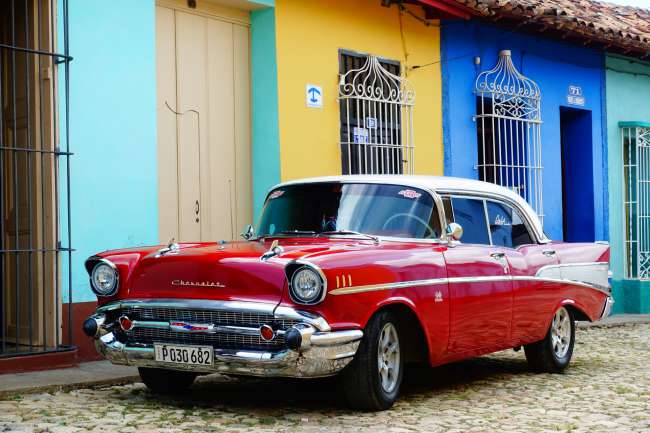
Marandu jeguata rehegua Cuba-pe
